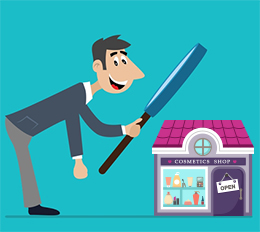The boutique retailer channel is one of the fastest growing channels in the beauty industry, being a hotbed for a multitude of brands that are looking to create a more personalized, unique beauty experience, as well as fortify their position on this highly competitive market. This week, we interview Carrie Mellage, our Vice President of Consumer Products, who shares some early highlights from our upcoming Boutique Beauty Retailers: Channel Analysis and Opportunities report series.
First of all, what is a boutique retailer?
We use the term “boutique retailer” to refer to retailers where the brand is the retailer, and that brand is the only one sold at that store. They are also called “freestanding stores” or “vertically-integrated specialty stores.” Think MAC freestanding stores or L’Occitane.
What makes the channel so vibrant?
There has been a lot of activity in specialty retail lately. Major retailers like Lush and Kiehl’s have been continually opening new stores. Even Bath & Body Works, which is already extremely well penetrated, added about 16 locations in 2015 and plans on opening 23 in 2016. Many of the players here are seeing double-digit increases each year, far ahead of the beauty industry’s average.
Why are shoppers drawn to these stores?
More than ever, consumers crave unique experiences. These stores provide shoppers with a fun shopping experience that they can’t get elsewhere, so there is the exclusivity factor. They are also drawn to the constant flow of newness, both in terms of products and merchandising.
Can you name a few brands that are rapidly expanding into this scene?
Rituals is one that comes to mind. What’s different about Rituals is that it is more of a lifestyle brand rather than an exclusive beauty retailer. Rituals also offers items like candles, tea, and apparel. Rituals is predominately in the Netherlands, but has recently focused on international expansion. A new London flagship is reportedly opening in Covent Garden soon, helping to strengthen its presence in the United Kingdom. In the United States, Rituals has plans to roughly triple its door count by the end of 2016.
Another example is Kiko, an Italian chain, which has aggressively been growing internationally. Kiko entered the U.S. market only two years ago and already has nearly 30 stores here. Kiko has also been aggressively growing in the United Kingdom and now ranks fourth there among boutique retailers in terms of beauty sales.
Are there any other notable new players in freestanding retail?
Absolutely. The most notable is NYX (L’Oréal), which opened its first store only a year ago and already has 15 boutiques in the United States in 2016. It also seems that Philosophy (Coty) is gearing up to start opening more doors. The company has had one open in Arizona for a few years, but is now planning to move into the freestanding channel in a more serious way, with at least one new store expected to open this year.
In addition, as consumers continue to embrace Korean trends, Korean retailers like Nature Republic and TonyMoly are setting up shops in the United States.
What about luxury brands?
We’ve seen a plethora of prestige brands dabbling in the beauty retailing scene in the last few years, especially in Europe. For example, in London, both Dior and Burberry have stores dedicated to beauty. Even Guerlain (LVMH), which has had its own boutique in Paris for more than 100 years, is bringing a lot of newness to the channel. In 2013, Guerlain transformed its historic Champs-Elysées location into an enormous shop spanning four levels, reportedly making it the largest perfume and cosmetics store dedicated to a single brand. Earlier this year, Guerlain opened a new concept store in Paris where shoppers can have a personalized perfume experience.
Why are so many beauty brands entering the retailing game?
While being your own retailer certainly comes with a new set of challenges, it also offers numerous brand building opportunities. Many brands use this as part of an omni-channel strategy—as a way to boost brand awareness, strengthen consumer loyalty, and drive brand sales across all channels of distribution. Another key advantage to having your own stores is that you can better understand shoppers, test new product concepts, and evaluate product, merchandising, and promotional initiatives in real time.
Does one product category tend to fare better than another in the freestanding stores channel?
Yes, bath and body products represent anywhere from 30% to 45% of the beauty products sold in this channel, depending on the country, according to early figures from our imminent Boutique Beauty Retailers: Channel Analysis and Opportunities. Fragrances is another important category because of freestanding retailers like Victoria’s Secret and Jo Malone. In the United States, fragrances represent approximately 35% of beauty products sold in this channel. Makeup is also key and accounts for the vast majority of sales for players like MAC and Kiko. What all of these categories have in common is that they are ones that shoppers can experiment with in store.

